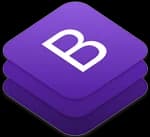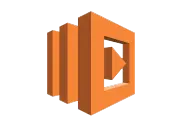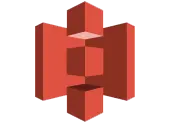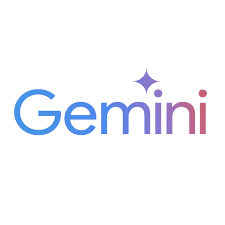Our Alumni Work at Top Companies





Java Course Curriculum
It stretches your mind, think better and create even better.
Topics:
1. What is an Application?
2. Types of Applications
3. Web Application Fundamentals
Basic concepts and components of web applications.
4. Web Technologies: (List key technologies and their roles)
Frontend: HTML, CSS, JavaScript, React
Backend: Python, Java, Node.js
Databases: SQL (MySQL, PostgreSQL), NoSQL (MongoDB).
5. Software Development Life Cycle (SDLC)
Phases: Planning, Analysis, Design, Implementation (Coding), Testing, Deployment, Maintenance.
6. Application Development Methodologies
Agile: Core principles, Scrum, Kanban
Waterfall
Topics:
1. What is Data
2. Types of Data
3. Data Storage
4. Data Analysis
5. Data Engineering
6. Data Science
Topics:
1. The Importance of Computing Power
2. Key Computing Technologies:
CPU (Central Processing Unit)
GPU (Graphics Processing Unit)
3. Cloud Computing:
What is the Cloud?
Cloud Service Models: IaaS (Infrastructure as a Service), PaaS (Platform as a Service), SaaS (Software as a Service)
Topics:
1. What is Artificial Intelligence (AI)?
2. How AI Works?
3. Key Concepts:
Machine Learning (ML)
Deep Learning (DL)
4. Generative AI:
What is Generative AI?
Examples: Large Language Models (LLMs), image generation models.
5. AI in Everyday Learning
Topics:
1.Customer Relationship Management (CRM)
2. Human Resource Management Systems (HRMS)
3. Retail & E-Commerce
4. Healthcare
Topics:
1. History and key features of Java
2. Java compared to other programming languages
3. Installation of Java and IDE setup
4. Writing and running the Hello World program
5. Overview of JVM, JRE, and JDK
Topics:
1. Variables, data types, and operators in Java
2. Control structures including loops and conditional statements
3. Basic Input/Output operations in Java
4. Java coding conventions and best practices
Topics:
1. Introduction to classes, objects, and methods
2. Understanding inheritance and its types
3. Exploring polymorphism: method overloading and overriding
4. Abstract classes and interfaces
Topics:
1. Encapsulation and its importance
2. Access modifiers: public, private, protected, and default
3. Non-access modifiers: static, final, abstract, synchronized
4. Constructors, destructors, and their roles in Java classes
Topics:
1. Working with arrays and array operations
2. String manipulation with Strings and StringBuilder
3. Basics of regular expressions in Java
4. Introduction to the Collections framework
Topics:
1. Basics of exception handling using try-catch and finally
2. Creating custom exception classes
3. Fundamentals of multithreading and thread lifecycle
4. Synchronization and inter-thread communication techniques
Topics:
1. Deep dive into the Collections framework
2. Using generics in Java
3. Introduction to Stream API and lambda expressions
4. File I/O operations and understanding the New I/O (NIO)
Topics:
1. Database interactions using JDBC
2. Introduction to Servlets and JSP
3. Overview of Maven as a build and dependency management tool
4. Advanced enterprise patterns and practices
Topics:
1. ORM concepts and integration with Hibernate
2. Configuration, session management, and advanced querying with Hibernate
3. Advanced mapping techniques in Hibernate
4. Performance tuning and caching mechanisms
Topics:
1. Core principles of IoC and DI in Spring
2. Building web applications with Spring MVC
3. Data access with Spring Data
4. Introduction to aspect-oriented programming with Spring AOP
Topics:
1. Introduction and setup of Spring Boot
2. Configuration and customization in Spring Boot
3. Developing RESTful services with Spring Boot
4. Data access and integration with databases
Topics:
1. Basics of microservices architecture
2. Creating and deploying microservices with Spring Boot
3. Implementing service discovery and using an API gateway
4. Ensuring fault tolerance and resilience in microservices
Topics:
1. Advanced REST API development techniques
2. Dockerization of Spring Boot applications
3. Overview of Spring Cloud services
4. Building reactive microservices with Spring Boot and WebFlux
Topics:
1. Implementing CI/CD pipelines for Spring Boot applications
2. Security practices in Java and Spring applications
3. Monitoring and logging in microservices
4. Ensuring code quality with static analysis tools
Topics:
1. Fundamentals of reactive programming with Spring WebFlux
2. Managing backpressure in reactive streams
3. Securing reactive applications
4. Best practices for developing reactive applications
Topics:
1. Cloud Computing Basics
Understanding cloud computing: Definitions, service models (IaaS, PaaS, SaaS), and deployment models (public, private, hybrid, multicloud).
2. Cloud Service Providers Overview
Introduction to major cloud platforms (e.g., AWS, Azure, Google Cloud), focusing on their core services relevant to developers.
3. Cloud-based Development Environments
Setting up and utilizing cloud-based IDEs and development tools to streamline development workflows.
4. Deploying Applications on the Cloud
Basic concepts of application deployment on the cloud, including containerization basics with Docker and initial orchestration concepts.
Topics:
1. Understanding DevOps
The philosophy, practices, and benefits of DevOps in modern software development, emphasizing collaboration, automation, and integration.
2. Version Control with Git
Deep dive into using Git for source code management, including best practices for branches, commits, merges, and pull requests.
3. Continuous Integration/Continuous Deployment (CI/CD)
Introduction to CI/CD pipelines, overview of tools ( GitHub Actions), and setting up basic pipelines for automated testing and deployment.
4. Monitoring and Feedback
Basics of application monitoring, log management, and utilizing feedback for continuous improvement.
Topics:
1. Containers and Docker
Introduction to containers, Docker fundamentals, creating Docker https://www.digitaledify.ai/images, and container management basics.
2. Managing Application Infrastructure
Basic strategies for managing infrastructure as part of the application lifecycle, including introduction to infrastructure as code (IaC) principles.
Topics:
1. Scalable Application Design
Principles of designing scalable applications that can grow with user demand, focusing on microservices architecture and stateless application design.
2. Cloud-native Services for Developers
Leveraging cloud-native services (e.g., AWS Lambda, Azure Functions, Google Cloud Run) for building and deploying applications.
3. Databases in the Cloud
Overview of cloud database services (SQL and NoSQL) and integrating them into web applications.
4. Security Basics in Cloud and DevOps
Understanding security best practices in cloud environments and throughout the DevOps pipeline.
Topics:
1. Agile and Scrum Methodologies
Incorporating Agile and Scrum practices into team collaboration for efficient project management.
2. Code Review and Collaboration Tools
Utilizing code review processes and collaboration tools GitHub, to enhance code quality and team productivity.
3. Automation in Development
Exploring automation beyond CI/CD, including automated testing frameworks, database migrations, and environment setup.
4. DevOps Culture and Best Practices
Cultivating a DevOps culture within teams, embracing continuous learning, and adopting industry best practices for sustainable development.
Topics:
1. What is Generative AI?
2. Key Applications:
Text (ChatGPT, Claude, LLaMA)
Images (DALL·E, MidJourney, Stable Diffusion)
Audio (Music Generation, Voice Cloning)
Code (GitHub Copilot, Cursor)
3. Evolution of GenAI:
Rule-Based → Deep Learning → Transformers
GANs vs. VAEs vs. LLMs
Topics:
1. Effective Prompt Design
Instruction-Based, Few-Shot, Zero-Shot
2. Advanced Techniques:
Chain-of-Thought (CoT) Prompting
Self-Consistency & Iterative Refinement
3. Hands-on:
Optimizing prompts for GPT-4, Claude, LLaMA
Topics:
1. Why Transformers? (Limitations of RNNs/LSTMs)
2. Key Components:
Self-Attention & Multi-Head Attention
Encoder-Decoder (BERT vs. GPT)
3. Evolution: BERT → GPT → T5 → Mixture of Experts
4. Large Language Models (LLMs)
5. Pre-training vs. Fine-tuning
6. Popular Architectures:
GPT-4, Claude, Gemini, LLaMA 3
BERT (Encoder-based) vs. T5 (Text-to-Text)
Topics:
1. Introduction to AI Agents
What are AI Agents?
vs. Traditional AI:
Applications:
2. AI Agent Frameworks
CrewAI (Multi-Agent Collaboration):
n8n (Workflow Automation):
Topics:
1. Designing AI Agents
CrewAI + n8n: Automating Business Workflows
Multi-Agent Systems: Collaboration & Specialization
2. Real-World Applications
Case Studies: AI Customer Support Agents
TOOlS & PLATFORMS























Our Trending Courses
Our Trending Programs
IT Engineers who got Trained from Digital Edify




LEARNERS
BATCHES
YEARS
SUPPORT
100000+ uplifted through our hybrid classroom & online training, enriched by real-time projects and job support.
Come and chat with us about your goals over a cup of coffee.
2nd Floor, Hitech City Rd, Above Domino's, opp. Cyber Towers, Jai Hind Enclave, Hyderabad, Telangana.
3rd Floor, Site No 1&2 Saroj Square, Whitefield Main Road, Munnekollal Village Post, Marathahalli, Bengaluru, Karnataka.